What is GPU memory? Best Guide 2024 { Everything you need to know}
In the realm of computer hardware, graphics processing units (GPUs) have emerged as powerful components that enhance the performance and efficiency of various computational tasks, particularly those related to graphics rendering, artificial intelligence, and machine learning. Central to the functioning of a GPU is its dedicated memory, often referred to as GPU memory. This article aims to provide a comprehensive overview on What is GPU memory? exploring its importance, types, architecture, and key considerations.
What is GPU memory?
GPU memory, also known as video RAM or VRAM, is a specialized form of high-speed memory that is dedicated to graphics processing units (GPUs). It serves as a storage medium for the data processed by the GPU, allowing for faster access and manipulation of graphics-related information.
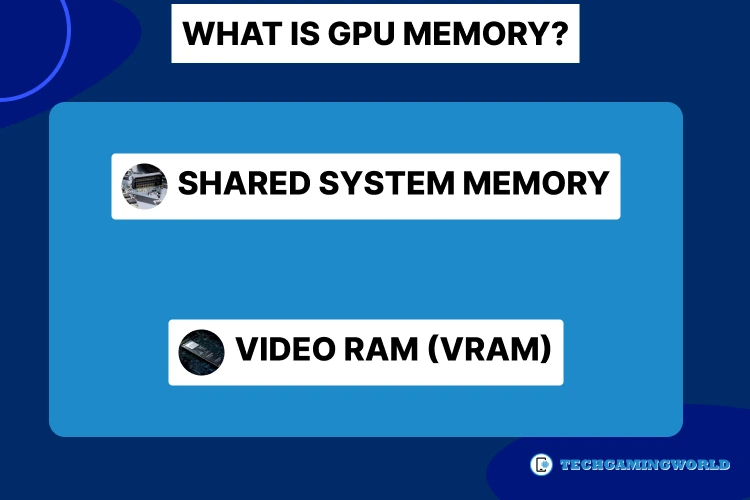
GPU memory plays a crucial role in accelerating graphics-intensive applications by reducing latency and minimizing data transfers between the GPU and system memory. It enables the efficient rendering of complex 3D graphics, supports high-resolution displays, and facilitates parallel processing for tasks like artificial intelligence and machine learning.
Related: Playing Games Off An External Hard Drive.
Importance of what GPU Memory
GPU memory plays a critical role in accelerating graphics-intensive applications. It serves as a high-speed storage medium for data that is processed by the GPU. By having dedicated memory, the GPU can access and manipulate data independently, reducing the need for frequent data transfers between the GPU and the system memory (RAM). This enhances performance by minimizing latency and bottlenecks.
Types of GPU Memory
a. Video RAM (VRAM)
VRAM is the most common type of memory found in GPUs. It is specifically designed to handle large amounts of data required for rendering complex 3D graphics. VRAM is typically faster than system memory and comes in various types such as GDDR6, GDDR5, and HBM (High Bandwidth Memory). The choice of VRAM type depends on factors like bandwidth requirements and cost considerations. Is DDR5 RAM Worth it? .
b. Shared System Memory
Some GPUs, particularly integrated GPUs found in laptops and low-end devices, may utilize a portion of the system memory as GPU memory. This shared memory configuration enables cost-effective solutions but can result in reduced performance compared to dedicated VRAM.
Related: 10 Effective Ways How to Optimize SSD for Enhanced Performance.
GPU Memory Architecture:
Modern GPUs employ a hierarchical memory architecture consisting of multiple levels of memory caches to maximize data access efficiency. This architecture comprises the following components:
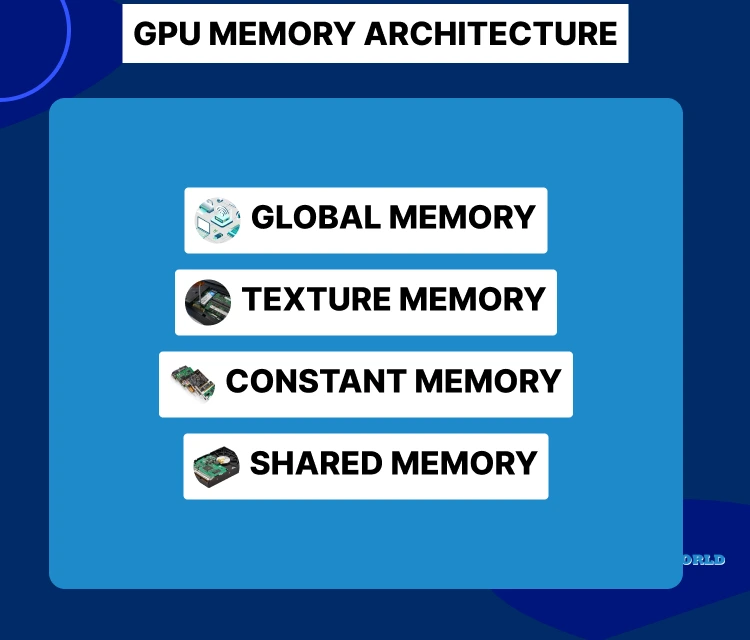
a. Global Memory
The largest and slowest section of GPU memory, global memory holds data accessible to all GPU threads. It acts as the primary storage for input and output data during GPU computations.
b. Texture Memory
Texture memory is a specialized form of GPU memory optimized for storing and accessing texture data used in rendering textures onto 3D objects. It provides high-bandwidth access, allowing efficient sampling and filtering operations.
c. Constant Memory
Constant memory is a small, high-speed memory region used for storing frequently accessed data that remains constant throughout a kernel execution. It enables fast read-only access, reducing memory access latency.
d. Shared Memory
Shared memory, also known as shared local memory or scratchpad memory, is a small but ultra-fast memory space shared among threads within a thread block. It facilitates efficient data sharing and inter-thread communication, improving parallel computation performance.
e. Registers
Registers are the fastest form of memory in GPUs, located directly on the GPU chip. They store temporary variables and thread-specific data during GPU kernel execution.
Key Considerations for GPU Memory
a. Memory Capacity:
The amount of GPU memory required depends on the nature of the workload. Graphics-intensive applications, high-resolution displays, and large datasets demand more memory. Insufficient GPU memory can lead to performance degradation or even application crashes.
b. Memory Bandwidth:
Memory bandwidth refers to the speed at which data can be read from or written to GPU memory. Higher memory bandwidth allows for faster data transfer, reducing the memory access bottleneck.
c. Memory Type and Configuration:
The choice of VRAM type and configuration depends on factors such as cost, performance requirements, and compatibility with the intended applications. It is essential to consider these aspects when selecting a GPU for specific tasks.
d. Memory Optimization Techniques:
Developers can employ various techniques to optimize GPU memory usage, such as data compression, memory pooling, and efficient memory access patterns. These techniques aim to minimize memory footprint and maximize memory bandwidth utilization.
FAQs: Of GPU memory?

Conclusion
GPU memory is a crucial component that empowers GPUs to deliver exceptional performance in graphics-intensive applications. By providing dedicated high-speed memory, GPUs can efficiently process and manipulate large amounts of data, reducing latency and enhancing overall computational efficiency. Understanding the types and architecture of GPU memory allows users to make informed decisions when selecting GPUs for specific tasks.
Additionally, optimizing GPU memory usage through techniques like data compression and efficient memory access patterns can further maximize performance. As technology advances, GPU memory will continue to evolve, enabling more immersive graphics, advanced AI algorithms, and accelerated scientific computations. So we hope you are now well aware of what is GPU memory? But if you have more questions about it you can contact us via our comment section.

About Author
I am EDIE MILES, the founder of TechGamingWorld, a blog. in which is an online gaming community dedicated to providing the latest news and reviews about the world of online games, including PC and console games. Read More

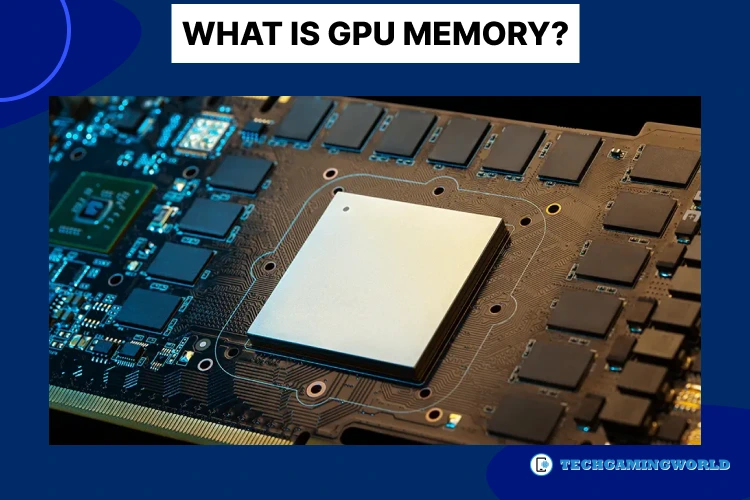




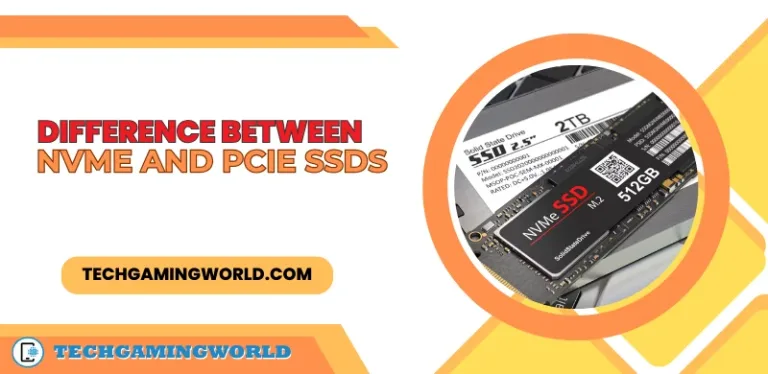
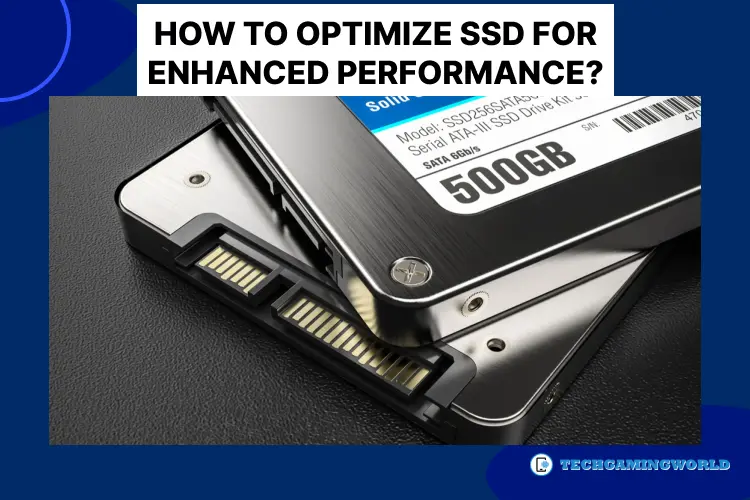
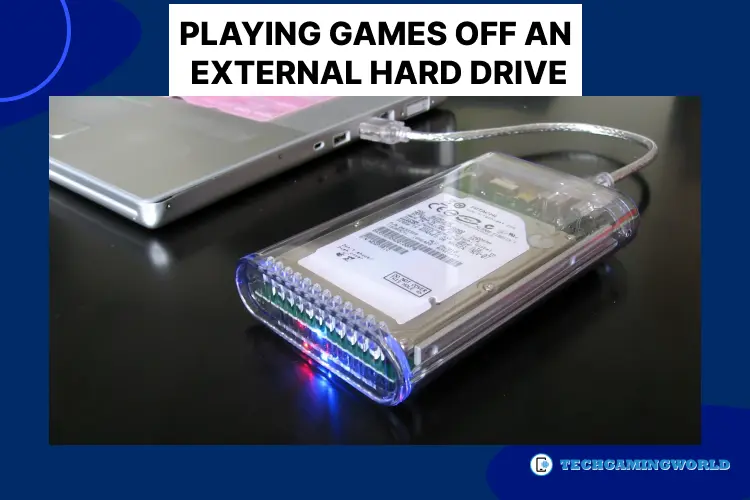
![4 Types of Solid State Drives and Connectors [Connectors Type Explained 2024]](https://techgamingworld.com/wp-content/uploads/2023/07/Types-of-Solid-State-Drives-and-Connectors-1.webp)